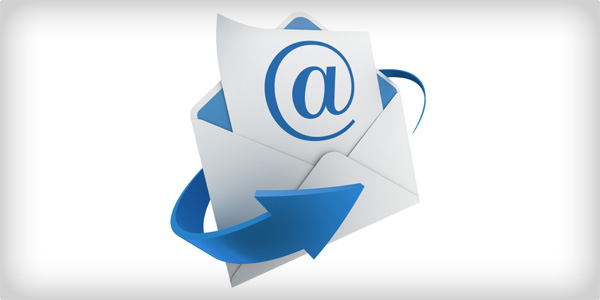If you’ve had eyes on your company’s own balance sheet lately, I don’t have to tell you that marketing costs money. And while promoting your B2B product through social media channels may be among the most cost effective marketing strategies in your toolkit, social media marketing does have its own associated costs.
I probably don’t have to tell you this – modern marketing costs money. In a recent report, Social Media Examiner noted of B2B marketers managing social media for 2 years or more, 68% dedicated 6 hours or more a week to their company’s social media marketing efforts. That’s over 300 hours a year, assuming one full-time employee is planning and executing all efforts.
In addition to employees’ time, significant resources go into subscription fees for online tools and software, advertising dollars, and investments in content creation and production hardware. Those dollars should only be allocated to the marketing channels yielding the strongest results for your company.
Don’t Spread Too Thin
Author, professor, and economist Michael Porter has been quoted with saying, “Strategy 101 is about choices: you can’t be all things to all people.”
New social media platforms seem to sprout up each day, but a company would be foolish to attempt to create and sustain a presence on all of them.
Not only is it impossible to do so in a unique and meaningful way, but a good portion of the work could go largely unnoticed. While business customers are using social media, they’re certainly not browsing every available platform.
The Right Social Media Platform For Your People
Instead, business brands need to be visible in the channels that most interest their target customers, and where they spend significant time. Those options should also be refined by the nature of the product or service you’re offering.
For example, some brands might naturally be good fits for video platforms where demonstration is especially helpful, for example.
For the foodservice arm of Heinz Corporation that may be Facebook and YouTube, or Twitter and Facebook for Walker Manufacturing, and for General Electric that may be Vine and Instagram.
Consider what direction you hear from customer surveys or your business website analytics. Does Pinterest direct a good deal of web traffic your way? If so, it could be beneficial to ramp up coordinated efforts there.
What’s Working In B2B Social Media
Social Media Examiner’s report notes the platforms most widely used by the 3,700 B2B marketers surveyed are LinkedIn (41%), Facebook (30%), Twitter (19%), YouTube (4%), Google Plus (3%), and Pinterest (2%).
How do those ratios match up to your customer’s stated interests? How about where your businesses’ social media marketing is concentrated?
This isn’t to say you shouldn’t keep an open mind about an emerging social media platform or at some point reconsider a platform you chose to let lapse. It does, however, mean you should be very intentional about the platforms you promote and develop.
A Case For Less: Copyblogger Media
Case in point, take a quick skim down this article about Copyblogger’s owner Brian Clark’s decision to shutter the brand’s Facebook page. A digital media and education company, Copyblogger boasts a wide blog readership and active online community on social media platforms Twitter and Google Plus.
When engagement analysis showed comparatively weak interest on Facebook, Clark decided to redirect efforts to the two social platforms his targets were actively using. Fans of the brand may never miss the Facebook page, but they can appreciate the increased focus at their chosen gathering spot.
What Business Audiences Want
Consumers expect household brands to ply their trade with clever gimmicks (remember the Old Spice campaigns?) and they value discounts or special offers (which consumer brands perpetuate through seasonally-timed “events” like back-to-school sales and other promotions).
By contrast, prospective business customers are looking for content with more heft to go along with the quick chuckle and rebate. And they don’t want to track your brand all over the social media universe to tap into the advice, ideas, and industry insight your company might offer. It’s inefficient and can feel forced.
The idea is to create the strongest potential for return by contributing the content most interesting to your targets, in the areas they’re most likely to discover it. So remember that while you may be the one circulating the content, but the gathering place is ultimately your audience’s decision.
What You Can Do Right Now
The adage “sometimes less is more” may be apropos for today’s cluttered social media marketing space. These tips could help your brand enjoy higher degrees of community through increased relevancy, without adding manpower.
- Review the social media platforms your company holds profiles with and participates on (no matter how long since the last post or update – include it all in your evaluation). Make notes about historical posting consistency, content type, message tone, audience reactions (shares, replies, etc.). It will probably be pretty obvious which social media platforms should be dropped, and which will benefit from renewed or increased attention.
- Use a variety of methods to get a bead on where your prospective customers are active. Simple surveys and web analytics are two. Customer service calls or in-person visits (if your structure uses field reps) could be a couple more. Quantitative and qualitative feedback gleaned through just about any method could be helpful.
- Get a solid grip on your company’s content creation resources, be it copywriters, videographers, or designers. And read up on which type of content performs best on the specific social media platforms identified in the step above. Find the intersection between what your company can do and what performs well with your targets on those platforms. By narrowing the platform focus and leveraging readily available resources, your social media marketing should soon gain ground.
- How High-Speed Connectivity Fuels AI Efficiency Across Industries - December 19, 2024
- Cox Business Attends The Hospitality Show 2024 – San Antonio - December 2, 2024
- Newport Investors Summit: A Hub of Innovation and Community Collaboration - November 8, 2024


